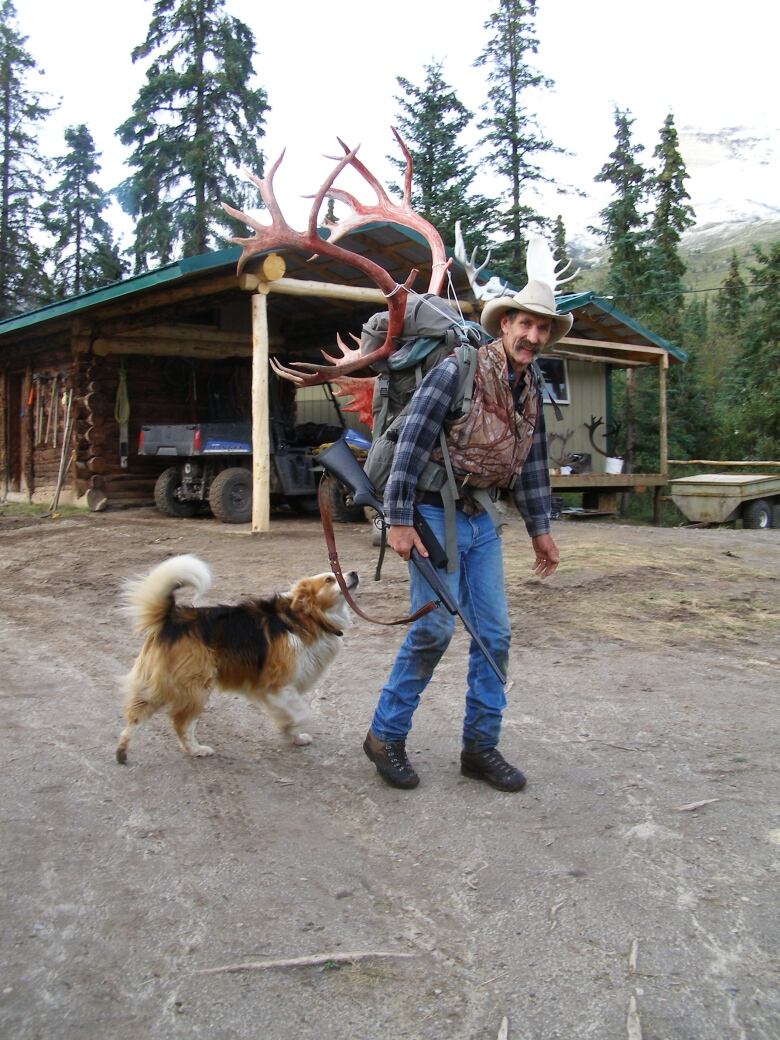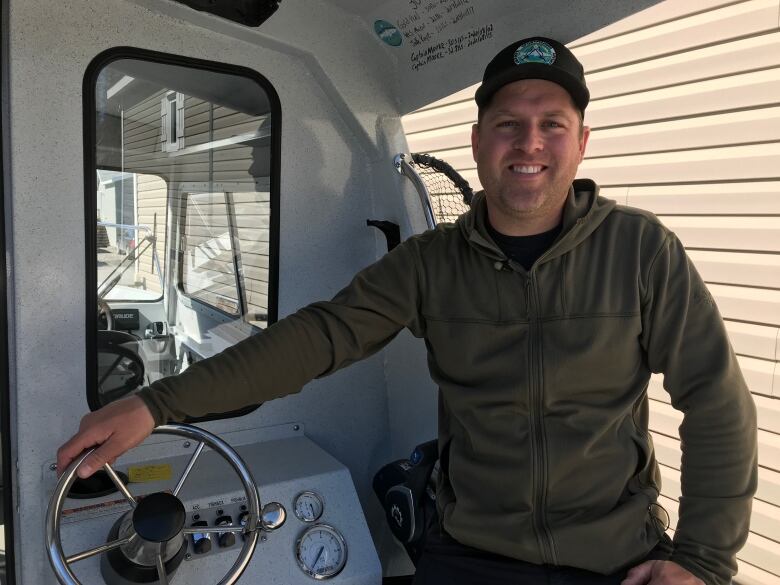N.W.T. readies for Canadian wilderness tourists, as more flexible self-isolation rules kick in
Territory doesnt expect to hit pre-pandemic number of visitors until 2025

After COVID-19 virtually wiped away his season last year, Harold Grinde is getting ready to once again welcome clients to his tourism business this summer.
He runs Gana River Outfitters, a big game hunting operation that spans the Mackenzie Mountains in the Sahtu region of Northwest Territories. He's also the chair of NWT Tourism, the territorial government's not-for-profit marketing organization.
Grinde's business is one of at least 13 remote operations who have been approved by the N.W.T.'s Office of the Chief Public Health Officer (OCPHO) to host out-of-territory clients this summer, a move the territorial government made to supportone of the hardest hit industries in the pandemic.
The N.W.T. has been virtually shut to non-essential travel since March 2020, and anyone travelling in has been required to self-isolate for two weeks, though the territory recently allowed fully vaccinated individuals travelling within Canada to N.W.T. to shorten that period if they test negative for COVID-19 on or after day eight.
As of Tuesday, there are no active cases of COVID-19 among residents in the N.W.T., however, there are four active cases in non-residents at two mines in the territory.

"It's important to know that people are lined up waiting to come. People want to travel, people want to see the sights. It's just a matter of when it's safe for them to do that," Grinde said.
As of May 27, 13 operators had been approved to host visitors from out-of-territory, and another nine are in the approval process, according to the OCPHO.
Under the plan, visitors can self-isolate on-site at a remote tourism location, instead of in one of the territory'sisolation hubs.
Visitors must submit a self-isolation plan for approval by the Chief Public Health Officer.
So far, approximately five people have been approved, but Darren Campbell, a spokesperson from the office, expects this number to increase in the coming weeks.
Operators are required to list a medical director of health, who would be the main point of contact between owners and the territorial health officials in case of an emergency or a potential case of COVID-19.
"I don't think you can ever get to zero risk," Grinde said.
"But we have very much mitigated risk and everything we can to bring in these guests. And that's what we plan to do.
Bringing in tourists will stimulate the economy in a safe way, by supporting local airlines and the businesses where tour operators buy supplies.

While the plan supports remote operators, Grinde said large sections of the tourism industry, like hotels and rural operators that are part of NWT Tourism "are hanging on by a thread right now."
"I hope they can survive and we can rebuild a vibrant tourism industry in the near future. But right now, it just isn't happening," Grinde said.
In 2018-19, the N.W.T., with a population 45,000, welcomed a record 120,000 visitors and reached $210 million in visitor revenue.
The territorial government'sTourism 2025: Roadmap to Recoverystrategy predicts returning topre-pandemic levels of visitors and spending they generate by the end of 2025-26. But these predictions are based on the border opening by April 1.
The Canada-US border also remains closed to non-essential travel until at least June 21.
Staycations not cutting in
In the past year, some tourism operators relied on patronagefromN.W.T. residents.But this market is too small toreplace the revenues generated from visitors outside the territory, according to NWT Tourism's $3 million marketing plan for 2021-22.
The average Canadian visitor spends $380 in the territory, roughly half of what an American tourist spends $738, excluding air travel, according to NWT Tourism.
Compare that to what the average Chinese visitor spends ($2,668), or an Australian visitor ($2,293), and it's easy to see why the North American market alone can't sustain the industry.
"Unfortunately for us, you know, our health authorities are not at that point where they think it's safe to fully open the borders, even if people are vaccinated," saidAndrew Moore, who runs Yellowknife Sportfishing Adventures.
He decided not to apply to the territory's remote tourism plan.
He has a young family and did not want to be away from them for weeks at a time. Plus, he said he's fully booked with staycations.

He supports the territory's move to welcome guests this summer because it accommodates lodges that haven't had business for more than a year.
"I'm happy that they're able to keep their doors open and get the revenue flowing again. It's good for everybody."
'I don't think we'll ever get back to where we were in 2019'
Gordon Gin is already looking ahead to summer 2022, when he hopes to have a full season at the Yellow Dog Lodge, a 20 minute plane ride northeast of Yellowknife that he co-owns with his wife.
"I don't think we'll ever get back to where we were in 2019, but near 2019 levels," he said.
Last year, their revenues were down about 85 to 90 per cent. They're hoping to hit around 40 per cent this summer, their 16th year in business.
"Are we going to survive another year? Are we going to have to remortgage the lodge and ask for more assistance from the government bodies? That's been the biggest thing on my mind is how we can survive these last couple of years and hopefully thrive in upcoming years," he said.
Like Grinde's business, he has applied and been accepted to host Canadians this season.
"First and foremost, we want to make sure that all the residents of the N.W.T. are safe and we don't impact their welfare and don't impact the the health care system," he said.
In case a guest needs to be medevaced from his lodge a call the medical director would make he said the plan is to fly them to an Alberta hospital. That's why he's requiring all his guest to have travel insurance.
Gin said welcoming guests from Canada is just the first step to recovery.
"Hopefully by the end of the year, we have a chance to open up our borders and accept some guests from the United States and around the globe," he said.
"That would really help us in our long term plans."
With files from Travis Burke and Kate Kyle












_(720p).jpg)


 OFFICIAL HD MUSIC VIDEO.jpg)
.jpg)



























































































